Hoxne, Suffolk (†St Edmundsbury & Ipswich) 1390-1400
The Seven Deadly Sins
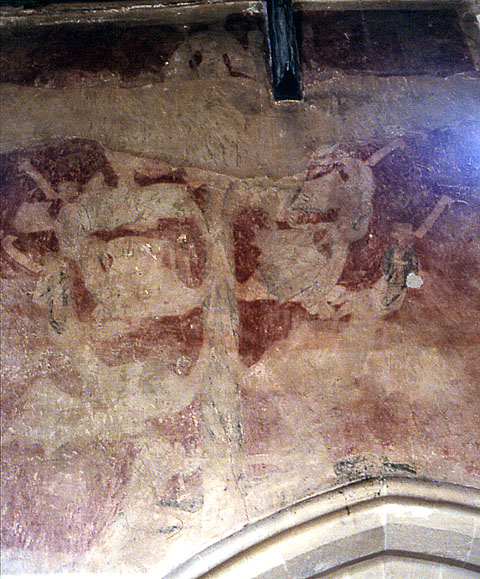
The painting is now very faded, but it is one of only a very few ‘tree-diagram’ examples of the subject left. Another at Crostwight in Norfolk is now on the site. The central trunk of the tree is fairly clear, and four of the sins springing from it on each side are at least visible. Two others, making six in all, must have been have been placed one on either side above those still existing, but a large area of plaster is missing here. The sins are personified as human figures, and the draperies, with touches of grey-blue, of that at the lower right are just discernible. They are actually being vomited, as at Raunds, out of the mouths of dragon-like creatures, but these are now very hard to make out. Four scrolls issuing from each figure are rather clearer, and these would once have identified each sin.
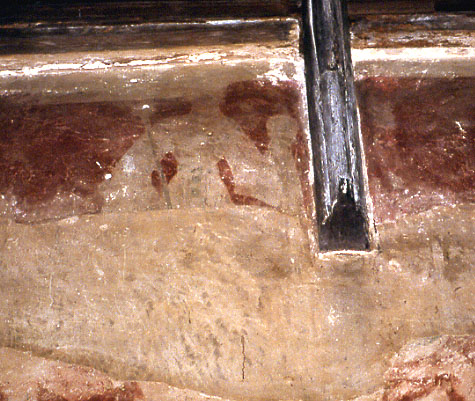
At the top centre of the painting, above an area of plaster from which all traces of painting have gone, is the silhouette of a figure representing, again as at Raunds, Pride, the central sin from which flow all the others (detail left). Tristram describes this figure as ‘a richly-clad gallant’, and a drawing by him¹ confirms this (my previous suggestion that this was in fact a female figure was wrong). The drawing makes it clear that he holds a mirror in his left hand and something resembling a sceptre in his right. Branches springing from the trunk of the central tree sprout dragons, who in turn vomit out sins personified as human figures, again much as at Crostwight and Raunds.
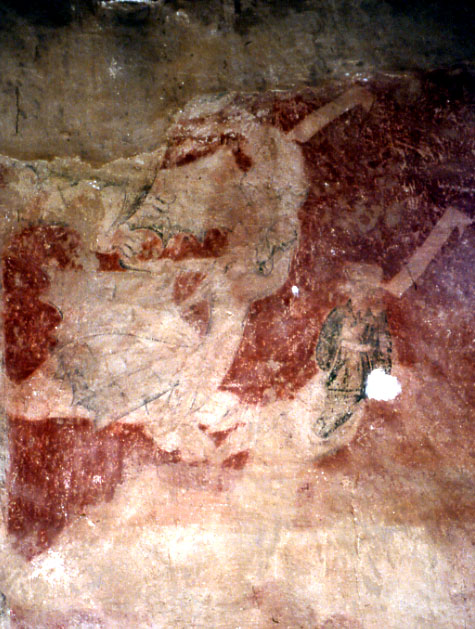
Some of these are reasonably clear, and the photograph to the right shows two of them. The dragon in the approximate centre of the photograph is fairly clear, although the sin being vomited is not, and above this dragon, the clawed feet and part of the wing of another are visible, confirming that there were once three sins ranged on each side. Conversely, the lowest dragon is now a faint whitish outline and shape, but the figure issuing from it is much clearer.
This figure is painted in a greenish colour distinguishable from the blue-grey pigment used elsewhere at Hoxne, and for that reason I think this figure probably represents Envy – the green-clad figure at Hessett is comparable. Munro Cautley² thought this figure was Sloth, and Tristram may have thought so too, although he is not very clear on the point. But both of them saw the painting when it must have been clearer than it is now, and there is another possible candidate for Envy shown below.
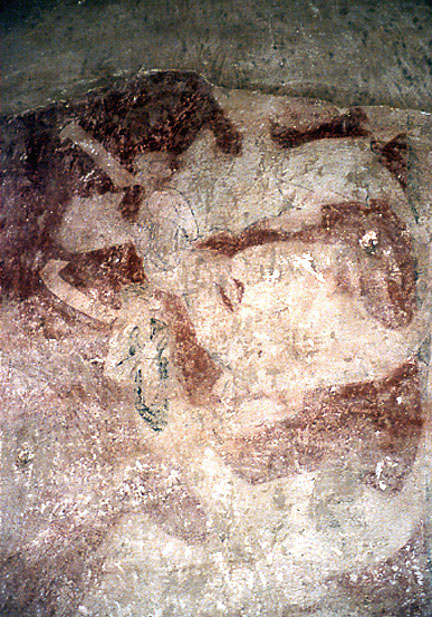
At the left are two of the sins from the other side. The dragons here have almost disappeared, but more greenish pigment is again visible on the lower small figure. But the upper figure is almost certainly identifiable as Avarice, since he holds a rectangular object that looks like a chest with an open lid, no doubt containing his hoard (there is a comparable example at Trotton in Sussex, on this site very soon). As on the right hand side, where the missing sin was probably Gluttony, above these another dragon and its sin has now disappeared.
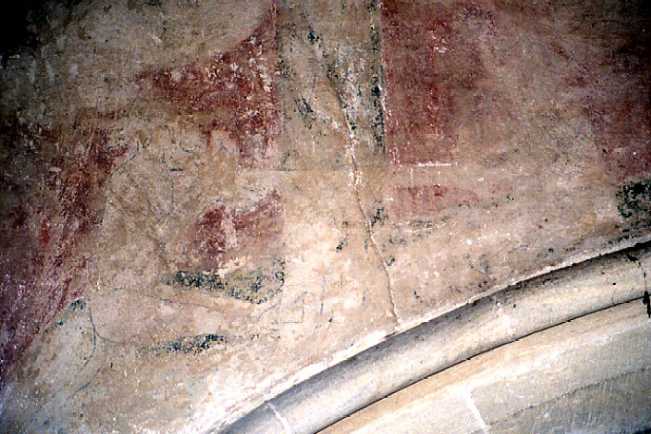
Finally, very faintly at the bottom of the painting, below all the sins, two figures sit with legs stretched out in front of them, one each side of the tree (detail right) sawing through the trunk with a long two-handed saw. These are generally agreed to have been devils, and in fact the one on the left has a distinct, rather rat-like tail. The message seems to be that Evil, however it is manifested, ultimately contains the seeds of its own destruction.
There are other paintings at Hoxne, including a very obscure Doom and a Seven Works of Mercy.
¹ Tristram III, p.183; ET Long, Some recently discovered English Wall Paintings, Plate 3A (drawing by Tristram), Burlington Magazine, No. 326, Vol.lvi, May 1930, p.225
² H Munro Cautley, Suffolk Churches and their treasures, Woodbridge, 1937 (5th edition, reprinted 1982), p.298.
† in page heading = Diocese